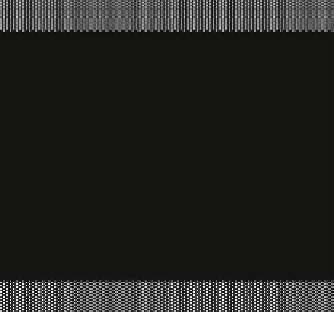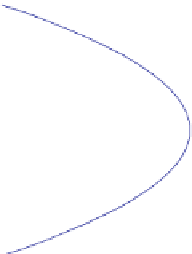Environmental Engineering Reference
In-Depth Information
Sidebar 11.1: One-Dimensional Laminar Flow (Hagen-Poiseuille)
One of the simplest examples for a solution of the Navier-Stokes equations is
the two-dimensional horizontal flow between two plates, in a steady state
situation with constant density
. Assume that the
z
-axis is directed perpendic-
ular to the plates and the distance of the plates is given by
r
D
z
.The
y
-direction
is neglected in the two-dimensional set-up. Moreover, the assumption of
a vanishing velocity component
v
z
perpendicular to a pressure gradient in
x
-direction can be made. From (
11.2
)to(
11.4
) follows that
2
@x
v
x
¼
@
0
i.e. the velocity is not changing in
x
-direction. If a constant pressure gradient
is given in
x
-direction (
D
p/
D
x
), the steady state version of the (
11.1
) reduces
to equations for
v
x
:
2
@
@z
2
v
x
þ
D
p
D
x
¼
0
The solution of the differential equation for
v
x
is a quadratic function of
z
.
The two integration constants are derived from the condition that the velocity
component vanishes at the plates at positions
z ¼
D
z=
2. The resulting
solution can be expressed as:
4
z
2
D
z
2
v
x
¼ v
max
1
The velocity distribution is visualized in Fig.
11.3
.
v
max
is the maximum
velocity at the halfway between the plates, given by the formula:
v
max
¼
D
z
2
8
D
p
D
x
v
Fig. 11.3 Laminar flow
between two plates
(
continued
)



















